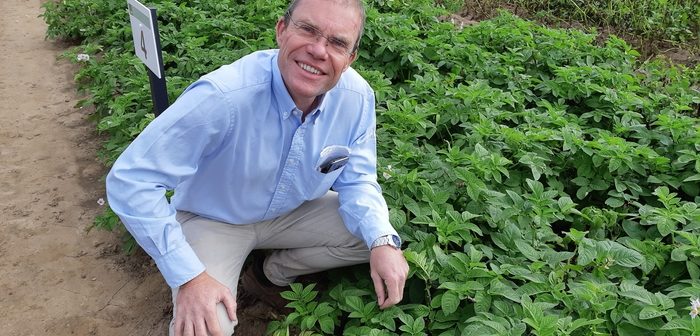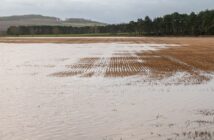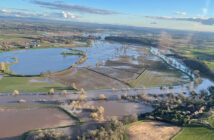Three industry leading manufacturers have formed a new partnership to help safeguard the future of a post-emergence herbicide that is under threat of de-regulation when it is up for re-approval in 2025.
BASF, Nufarm and Sharda Cropchem have formed the “Know the Bentazone Risk” initiative which is aimed at promoting sustainable on-farm water stewardship through marketing, events, on-farm engagement, and the development of management tools.
In addition to supporting farmers, the group will highlight good practice and liaise with external bodies – such as the Environmental Agency and water companies – to ensure they are aware of the industry’s commitment to reduce the levels of bentazone detected in surface and groundwater sources.
A high risk mapping tool to support cropping decisions and product application is in the process of development, and drip trays have been produced to support farmers this year. Steve May, Farm Manager at Fromant & Sanders, Kislingbury, Northamptonshire has already received his tray.
“I use the Anglian Water drip trays, they are excellent for putting under the sprayer filling hopper and also for holding plant protection products when filling. They help to reduce the risk of spills and drips which cause environmental pollution. The tray size and shape makes them easy to clean and store. The drip tray should be part of every sprayer operator’s anti-pollution armoury”.
Bentazone is highly soluble in water and mobile in soil and has been detected in both ground and surface water for many years, making this partnership vital for protecting the chemistry for the future of crops such as peas, beans, potatoes, alliums and linseed. With bentazone applications taking place in May, Paul Goddard, Stewardship and Value Chain Manager at BASF highlighted why it is essential that farmers take action this year.
“Bentazone is one of the few post-emergence herbicides for beans and the only post-em available for some especially challenging weeds in the pea crop, such as black nightshade. Therefore, it is essential that we do everything we can to protect it for the future, including working together as an industry and taking precautions when we apply it on-farm, to give farmers the best chance of producing high yielding crops.”
Dick Dyason, Technical Manager, UK & Ireland for Nufarm added: “The ‘Better Bentazone Together’ group is an important example of how competing companies can come together for the greater good, namely preventing contamination of surface and groundwater with crop protection products such as bentazone. We need to see a rapid reduction in the current levels of contamination in order to safeguard the future of the product and this will require a responsible response from advisers and growers who may be called on to accept weeds in their crop rather than apply bentazone in a high-risk area.”
Last month, ‘Better Bentazone Together’ shared the following guidance for application:
- Avoid high risk areas.You can download Magic Maps from Natural England or Check Zones from UK Gov which provide geographic information about the natural environment including the water courses, highlighting high risk areas; the Safeguard Zones and Source Protection Zones for bentazone.
- Keep chemistry on the surface.Bentazone will breakdown quickly where there is good light and oxygen so by keeping it on the surface you limit the chance of transfer whilst still protecting your crops. Avoid spraying if heavy rain is forecast in the following two days.
- Consider the weather.We know farming faces many pressures, but it is important to avoid spraying your crop on wet days or when there is water sitting in the field (fields with a shallow water table are to be avoided). The chemistry has high solubility and mobility so it will move into the water course or groundwater.
- No spray zone. Having a 6m buffer zone/5m no spray zone around the edges of the field, will help where there are high risk areas.
To find out more about “Know the Bentazone Risk”, click here




